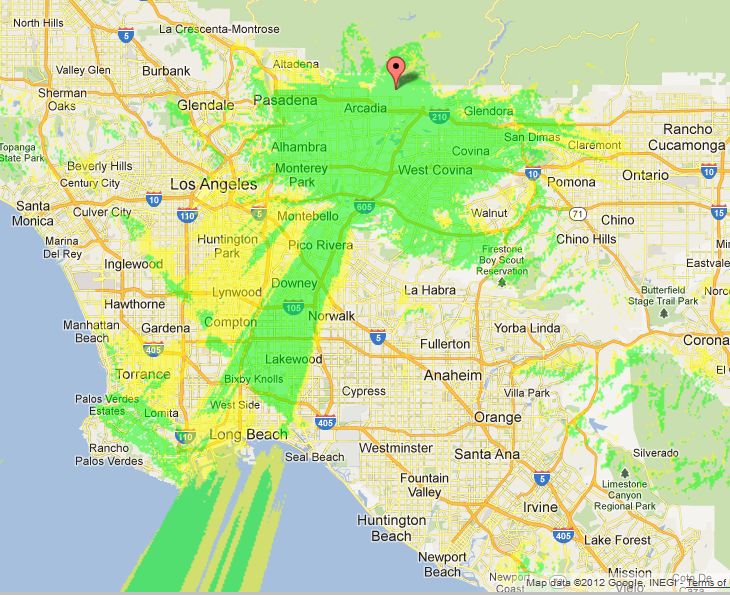Now that the W9WDX B DStar repeater is fully functioning, I decided to model the coverage once the antenna is in it's final installation location. This map shows a fairly detailed coverage analysis provided by ve2dbe.com/towercoverage.com.

Obviously the green area is the predicted good coverage. The testing we've performed indicates that the yellow area typically results in R2D2.
The problem I set out to solve is that although there are quite a few DStar repeaters in the L.A. area, coverage in the San Gabriel Valley was basically non-existant. This area represents an area of about 285 square miles and a population of about 1.5 million people. The main green area on the map is virtually an exact overlay of the San Gabriel Valley, which is surrounded by hills and the Angeles National Forest mountain range to the north. The interesting addition is the wedge of coverage that cuts through the valley between the two hill ranges to the south, following the 605 Freeway toward Long Beach. Based on this map, the repeater might be able to be accessed as far away as the front side of Catalina Island.
Not bad for a cheap home-brew DStar setup!

Obviously the green area is the predicted good coverage. The testing we've performed indicates that the yellow area typically results in R2D2.
The problem I set out to solve is that although there are quite a few DStar repeaters in the L.A. area, coverage in the San Gabriel Valley was basically non-existant. This area represents an area of about 285 square miles and a population of about 1.5 million people. The main green area on the map is virtually an exact overlay of the San Gabriel Valley, which is surrounded by hills and the Angeles National Forest mountain range to the north. The interesting addition is the wedge of coverage that cuts through the valley between the two hill ranges to the south, following the 605 Freeway toward Long Beach. Based on this map, the repeater might be able to be accessed as far away as the front side of Catalina Island.
Not bad for a cheap home-brew DStar setup!
Last edited:

